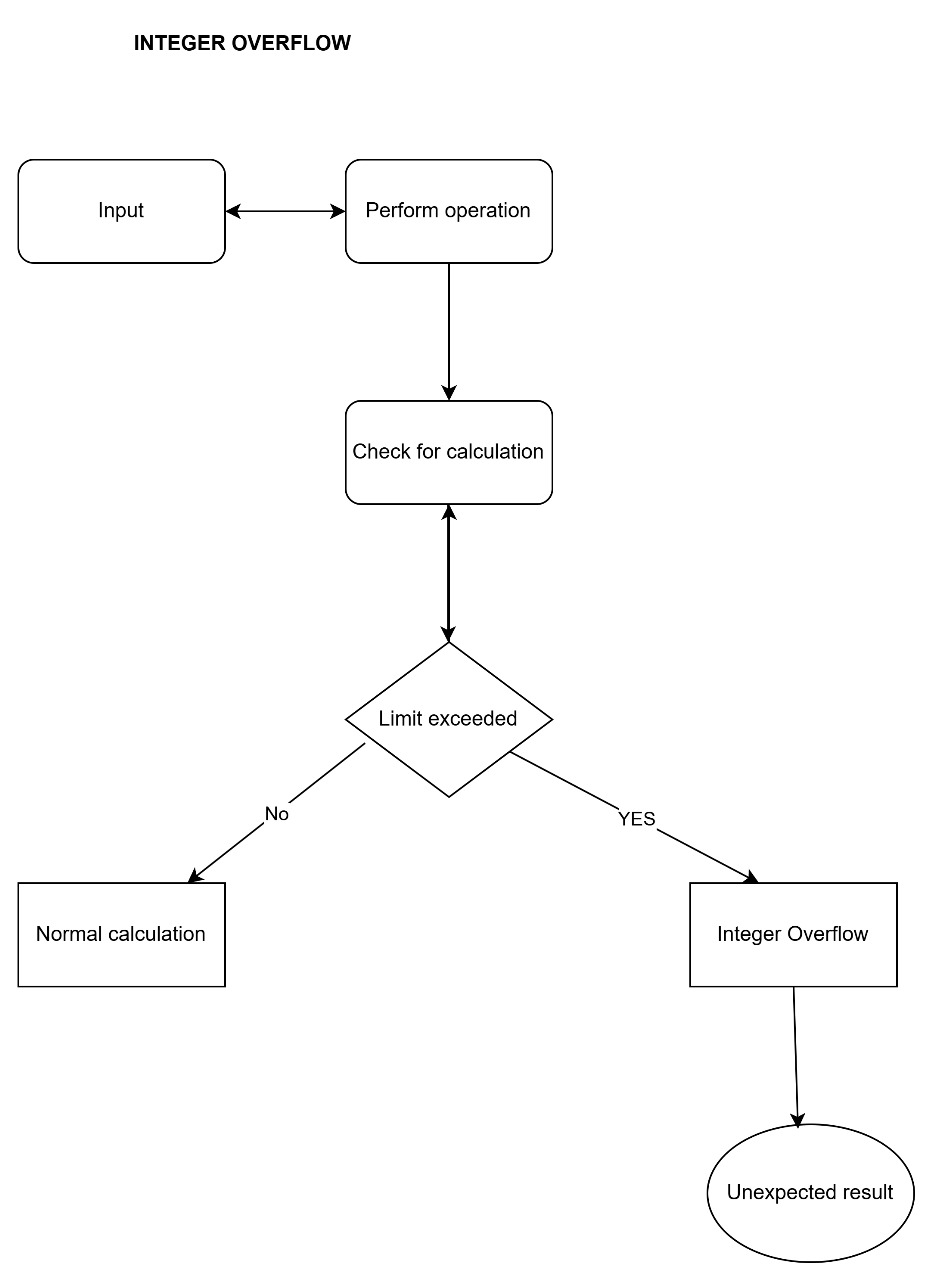Integer Overflow
Introduction
Integer overflow occurs when an arithmetic operation produces a result that exceeds the maximum or minimum value that can be represented by a specific integer data type. This happens due to fixed-size integer representations in programming languages, causing values to "wrap around" to the opposite end of the permissible range. Understanding integer overflow is essential due to its impact on system stability, data integrity, and software security.
Causes of Integer Overflow
1. Fixed-Size Limitation
Each integer data type has a predefined size in bits, which determines its numeric range. For example:
- 8-bit signed integer:
-128to127 - 32-bit signed integer:
-2,147,483,648to2,147,483,647
2. How Overflow Occurs
Overflow happens when a computation result exceeds the maximum or minimum allowable value for a type, causing it to "wrap around". For example, incrementing an 8-bit unsigned integer at its maximum value of 255 causes it to reset to 0.
3. Types of Overflow
- Signed Overflow: This may result in a sign flip, causing negative values to appear unexpectedly.
- Unsigned Overflow: The value wraps around to the minimum without changing the sign.
Potential Consequences of Integer Overflow
- Security Vulnerabilities: Attackers may exploit overflows to trigger buffer overflows and execute arbitrary code.
- Unexpected Program Behavior: Incorrect arithmetic results can lead to logical errors and unpredictable outcomes.
- Calculation Errors: Overflow can produce incorrect results, impacting the program's functionality.
- System Crashes: Critical failures, especially in safety-critical or high-reliability systems, can occur due to integer overflow.
Prevention Strategies
1. Language-Specific Features
- Use programming languages like Rust or Java that support overflow detection to prevent unintended overflows.
2. Larger Data Types
- Use larger integer types such as
long longorBigIntegerto reduce the risk of overflow in arithmetic operations.
3. Explicit Overflow Checks
- Manually verify results of calculations to ensure they are within the valid range before using them.
4. Safe Math Libraries
- Use libraries that provide safe arithmetic operations. For example:
SafeIntin C++checked_addin Rust
5. Compiler Options and Static Analysis
- Enable compiler warnings and use static analysis tools to detect possible overflow scenarios early in the development process.
Real-World Examples
- Unix Time Bug (2038 Problem): A well-known integer overflow scenario where 32-bit time representations will reach their maximum value, causing system date resets.
- NASA Mars Climate Orbiter Failure: A catastrophic mission failure due to incorrect unit conversions and integer handling, highlighting the importance of precision and range in calculations.
Conclusion
Integer overflow is a critical vulnerability that can disrupt software functionality, compromise data integrity, and create severe security risks. Developers must understand its causes, implications, and prevention techniques to design more resilient software systems. By employing safe programming practices, using compiler warnings , and leveraging specialized libraries, developers can mitigate the risks posed by integer overflow.
Visual Aid
You can use absolute paths to reference images located in the static directory:

